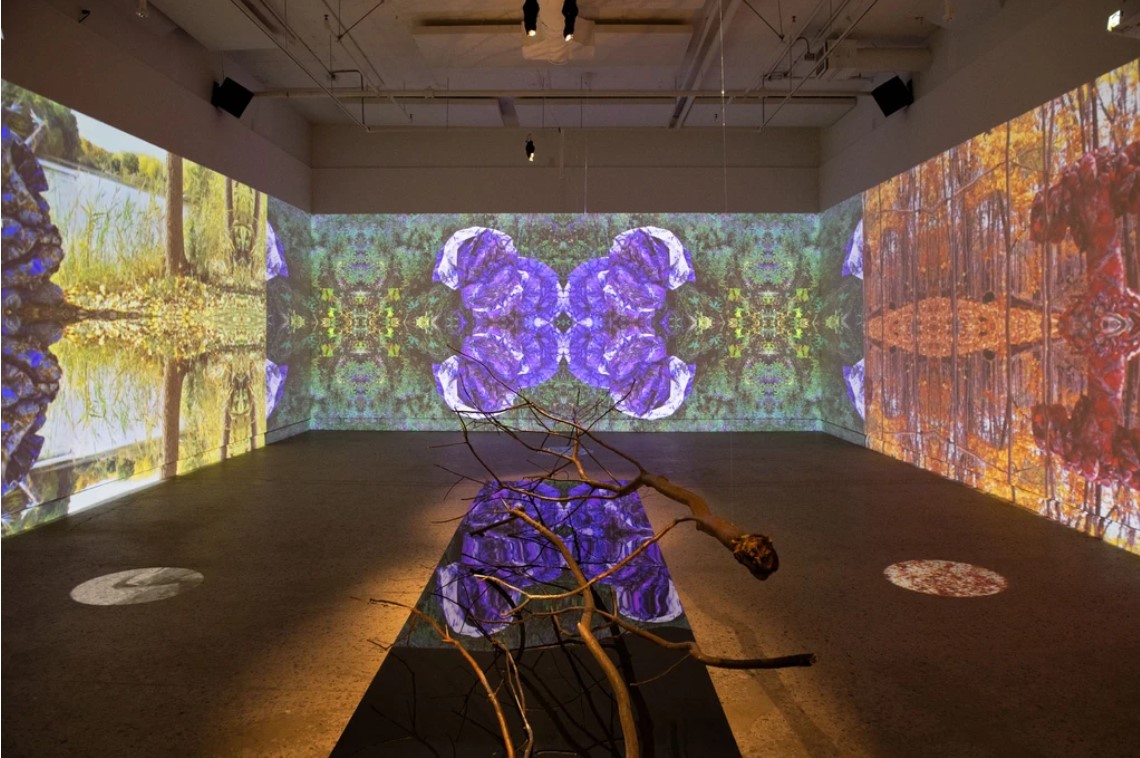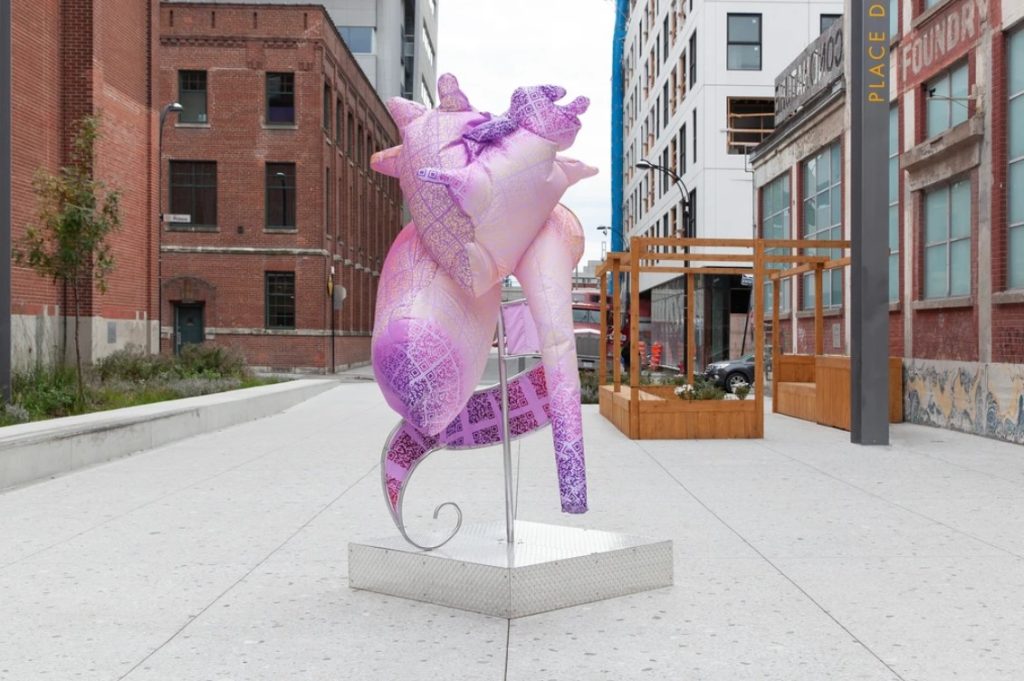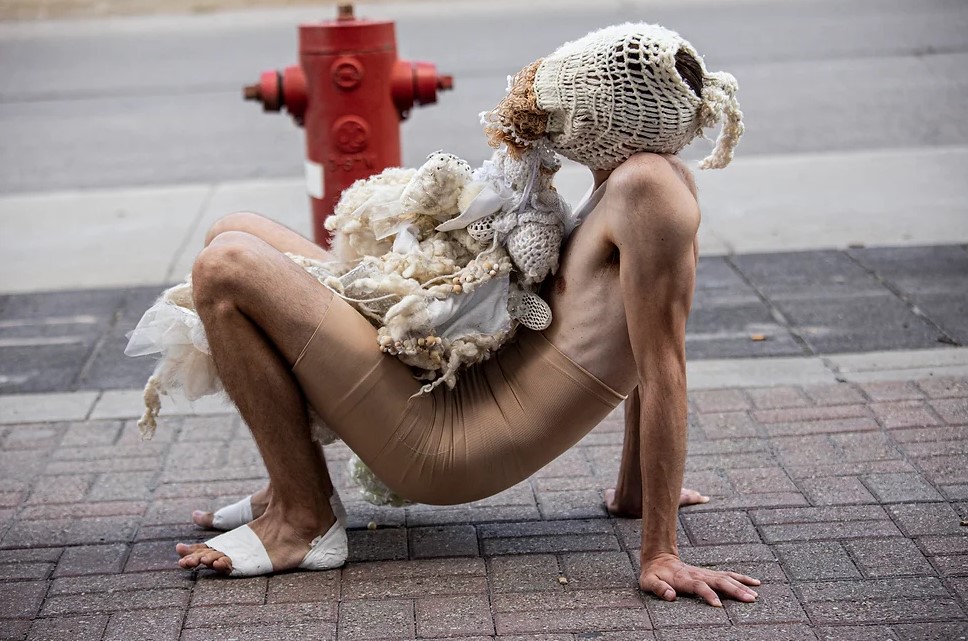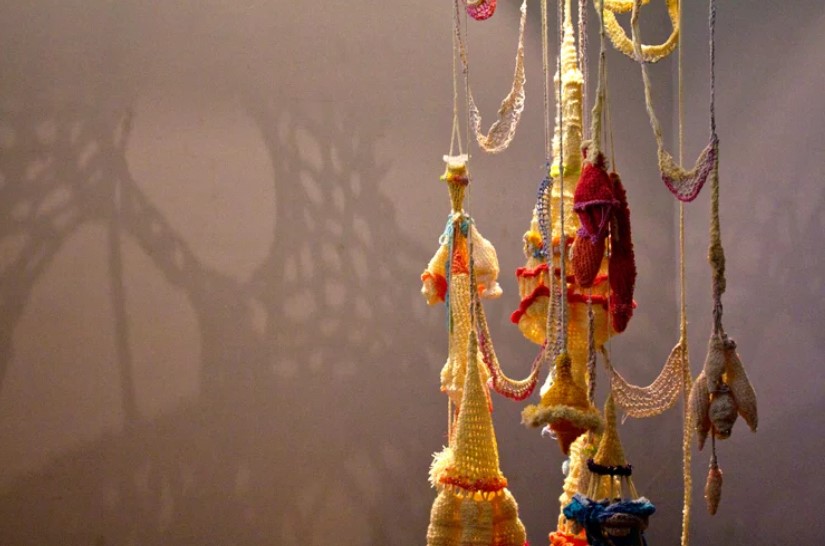For Laura Acosta, textile patterns become a means to reflect on her hybrid identity and embrace the beauty of both cultures.

Laura Acosta is a textile artist who incorporates performance, audio, and video into exhibitions that are often collaborative. Born in Bogota, Colombia, and raised in London, O.N., Acosta moved to Montreal after completing her interdisciplinary Bachelor of Fine Arts (2011) at NSCAD University.
Acosta’s partnership with Santiago Tavera—both are Colombian-Canadian—resulted in The Novels of Elsgüer, a series of five installations of “site-specific explorations of technological setups, corporeal interactions, and inquiries about experiences of ’the other.’” The installations landed the pair on the Sobey Art Award long list in 2023.
“We were the first Latinx artists to be on that list,” says Acosta. “It opens up opportunities—more people know about the work, but more so for us it was representation. The Latin diaspora in Canada is so huge, and there’s a queer Latin scene that’s formed across the country. We had this big party celebrating us having a moment.”
When not sewing, creating performances, or making installations, Acosta is the head of wardrobe in the theatre department at Concordia University.



Photos courtesy of Laura Acosta.
You use the term “transdisciplinary” in your work as opposed to “interdisciplinary” in reference to your practice. Why is that?
I have a lot of collaborators, and even though we all bring different skills and viewpoints they blend together to create something entirely new. For me, ‘inter’ speaks to different things at the same time, a variety—but ‘trans’ is weaving them together with no distinct lines. The performance is not only the artist, it’s the audience watching the piece, it’s how the technology affects the textiles presented. It gives a better idea.
How did you land on these particular elements of your work?
Ever since I was young I worked with fabrics. I was trained by a tailor because I thought I wanted to do fashion. Not being quite from Colombia, and not quite from here either, I have this liminal hybrid identity. For me, textile patterns could show this hybridity. Initially, I was working with European-looking laces and combining them with more Andean textile patterns, and at the time I was painting them.
When I got to NSCAD I was able to take classes in Fibre Foundations and once you take up more skills, the repertoire of tools opens up. I started introducing performance because textiles are inherently performative. The performances I was doing sort of became a way of creating this other character—a hybrid other body. Santiago was having a similar conversation in his practice, but more technological.
What’s the appeal of collaboration for you?
I feel like collaboration is my practice, it’s not a medium of my practice. Someone will start with an idea, and I’ll have more ideas, and they’ll have more ideas and then we’ll have planned a whole installation.
It’s important to me that everybody feels like they’re a part of it. Textiles have a lot to do with community and collective creation. I think the future is collective.
The Novels of Elsgüer interactive documentary and VR immersive installation will be on display at OPTICA, un centre d’art contemporain from April 13 to June 15, 2024 in Montreal. You can see more of Laura Acosta’s work on her website.
